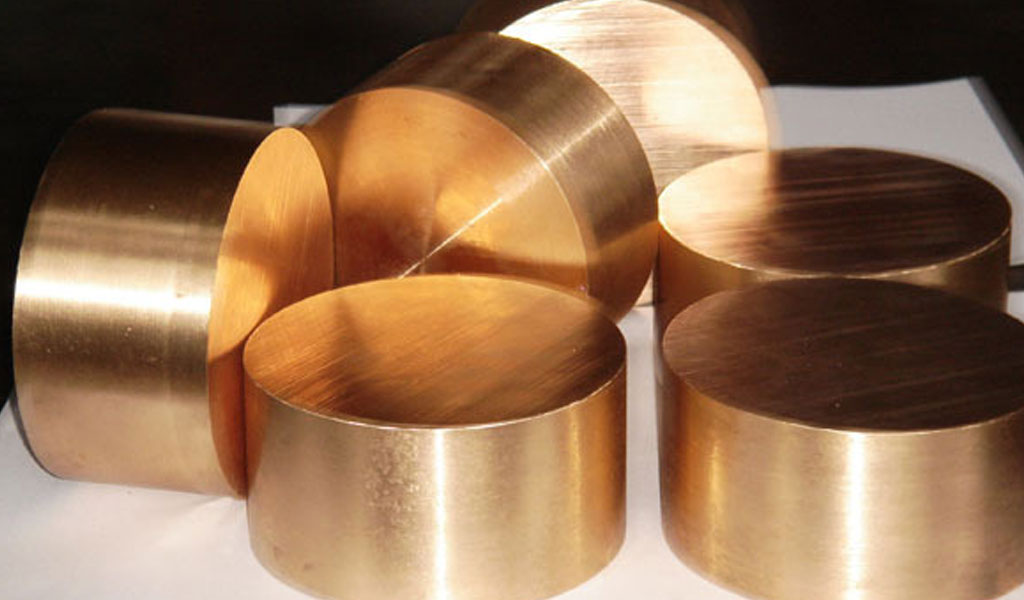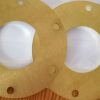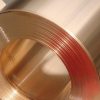
Stereolithography (SLA) is one of the pioneering techniques in the realm of 3D printing, known for its precision and ability to create complex geometries. Beryllium copper, a versatile and high-performance alloy, is widely used in various industries due to its exceptional properties. This article explores the possibility and challenges of using SLA 3d printing technology to print beryllium copper, delving into the characteristics of both the material and the printing process.
What Is SLA 3D Printing
SLA is an additive manufacturing process belonging to the family of reductive photopolymerization. In SLA, objects are produced by selectively curing polymer resins layer by layer using ultraviolet (UV) laser beams. The materials used in SLA are photosensitive thermosetting polymers in liquid form. The photopolymerization process, also often referred to as stereolithography, is called StereoLithography in English, abbreviated as SL, and sometimes referred to as SLA (StereoLithography Apparatus). This process was obtained by Charles Hull in 1984. The United States patent is the earliest developed rapid prototyping technology. Since 3D Systems first launched the SLA commercial rapid prototyping machine in 1988, SLA has become one of the most mature and widely used RP typical technologies. It uses photosensitive resin as the raw material and solidifies it by computer-controlled ultraviolet laser. This method can simply and fully automatically produce complex three-dimensional shapes that have been difficult to produce by various processing methods in the past, and has epoch-making significance in the field of processing technology.
Molding principle of SLA3D printing technology
Filled with liquid photosensitive resin, the ultraviolet laser beam emitted by the helium-cadmium laser or argon ion laser scans the surface of the photosensitive resin point by point according to the information of each layered section of the part under the control of the control system, so that the thin layer of resin in the scanned area undergoes photopolymerization reaction and solidifies to form a thin layer of the part. After one layer is solidified, the workbench moves down a layer thickness so that a new layer of liquid resin is applied to the surface of the previously solidified resin. The scraper flattens the surface of the resin liquid with high viscosity, and then the next layer is scanned and processed. The newly solidified layer is firmly bonded to the previous layer, and this is repeated until the entire part is manufactured, and a three-dimensional solid prototype is obtained.
Process of SLA3D printing technology
The production of light-curing rapid prototyping can generally be divided into three stages: pre-processing, prototyping, and post-processing. The pre-processing stage mainly involves designing a three-dimensional solid model through CAD, converting the prototype data, determining the placement orientation, applying support, and slicing the model using discrete programs, designing the scanning path, and the generated data will accurately control the movement of the laser scanner and the lifting platform, which is actually preparing data for the production of the prototype; prototype production is to perform photocuring on a dedicated photocuring rapid prototyping equipment system. Before prototyping, the photocuring rapid prototyping equipment system needs to be started in advance so that the temperature of the resin material reaches the preset reasonable temperature, and the laser also needs a certain amount of stabilization time after ignition. After the equipment is operating normally, start the prototype production control software, read in the layer data file generated by the pre-processing, and then start the stacking production. The entire photocuring process of the stacking is automatically completed under the control of the software system. After all the stacking is completed, the system automatically stops. Post-processing, after the prototype stacking is completed in the rapid prototyping system, subsequent processing such as peeling is required to remove waste and support structures.
Advantages of SLA technology
- 1. Photocuring is the earliest rapid prototyping manufacturing process, with high maturity and time-tested.
- 2. The prototype is made directly from the CAD digital model, with fast processing speed, short product production cycle, and no cutting tools and molds.
- 3. It can process prototypes and molds with complex structures or difficult to form using traditional means.
- 4. Make the CAD digital model intuitive and reduce the cost of error repair.
- 5. Provide samples for experiments, and verify and check the results of computer simulation calculations.
- 6. It can be operated online and remotely controlled, which is conducive to production automation.
Disadvantages of SLA technology
- 1. The SLA system is expensive, and the cost of use and maintenance is too high.
- 2. The SLA system is a precision equipment for operating liquids, and has strict requirements on the working environment.
- 3. Most molded parts are resins, with limited strength, stiffness, and heat resistance, which is not conducive to long-term storage.
- 4. The preprocessing software and driver software have a large amount of calculations and are too closely related to the processing effect.
- 5. The software system is complex to operate and difficult to get started; the file format used is not familiar to most designers.
SLA technology is mainly used to manufacture a variety of molds, models, etc.; it can also be used to replace the wax mold in investment casting by adding other ingredients to the raw materials. SLA prototype molds have a fast forming speed and high precision, but due to the shrinkage during the resin curing process, stress or deformation will inevitably occur. Therefore, the development of photosensitive materials with small shrinkage, fast curing and high strength is its development trend. The development trend of stereolithography is high speed, energy saving, environmental protection and miniaturization. The continuous improvement of processing accuracy makes it possible to make great achievements in the fields of biology, medicine, microelectronics, etc.
Beryllium Copper: Properties and Uses
Beryllium copper (BeCu) is a copper alloy with beryllium as the principal alloying element. Typically containing 0.5% to 3% beryllium, BeCu combines high strength with non-magnetic and non-sparking qualities. The most common types of BeCu are:
- High Strength BeCu (C17200): Contains about 1.8-2.0% beryllium.
- High Conductivity BeCu (C17500 and C17510): Contains about 0.2-0.7% beryllium with additional elements like cobalt or nickel to enhance conductivity.
Mechanical Properties
Beryllium copper is prized for its unique combination of properties, including:
- High Strength and Hardness: Comparable to high-strength steels.
- Excellent Thermal and Electrical Conductivity: About 60% that of pure copper.
- Non-Sparking: Safe for use in hazardous environments.
- Non-Magnetic: Suitable for applications requiring non-magnetic materials.
- Corrosion Resistance: Resistant to various corrosive environments.
Industrial Applications
Due to its exceptional properties, beryllium copper is used in:
- Aerospace and Defense: Components like bushings, bearings, and connectors.
- Electronics: Connectors, springs, and switches requiring high conductivity.
- Oil and Gas: Non-sparking tools and components.
- Medical: Surgical instruments and devices due to its non-magnetic nature.
- Automotive: High-stress components requiring durability and conductivity.
Challenges in 3D Printing Beryllium Copper
Beryllium copper’s properties that make it valuable in various industries also pose challenges for 3D printing, such as:
- High Melting Point: BeCu melts at around 870-980°C, making it difficult to process with conventional 3D printing methods.
- Toxicity: Beryllium is a hazardous material. Inhaling beryllium dust or fumes can lead to chronic beryllium disease (CBD), a serious lung condition.
Compatibility with SLA
SLA 3D printing primarily involves photopolymer resins, which are cured using UV light. The process is typically not designed for metals, particularly those requiring high melting temperatures and specific handling protocols. Key issues include:
- Material Limitations: SLA resins are not metallic, and integrating metals into the resin without altering its properties significantly is challenging.
- Curing Process: The UV curing process of SLA is incompatible with metals, which do not respond to photopolymerization.
- Mechanical Properties: Achieving the desired mechanical properties of beryllium copper through SLA-printed resins would be difficult.
Alternative Methods
Given the challenges, other 3D printing methods might be more suitable for beryllium copper, such as:
- Direct Metal Laser Sintering (DMLS): Uses a laser to sinter powdered metal, layer by layer.
- Selective Laser Melting (SLM): Melts metal powder completely to form solid parts.
- Electron Beam Melting (EBM): Similar to SLM but uses an electron beam.
These methods are better suited for processing high-temperature metals and can produce parts with the required properties of beryllium copper.
Current Research and Developments
The field of metal 3D printing is evolving rapidly, with significant research focused on expanding the range of printable materials and improving process efficiency. Techniques such as binder jetting and cold spray are being explored for their potential to handle a variety of metal powders, including beryllium copper.
Experimental Studies
Some experimental studies have attempted to incorporate metal powders into photopolymer resins to create composite materials. These efforts aim to leverage the ease of SLA printing while imparting some metallic properties to the printed parts. However, these composites often fall short of the full mechanical and thermal properties of pure metals.
Safety and Handling Improvements
Research into safer handling and processing of beryllium copper focuses on reducing exposure to beryllium dust and fumes. Innovations in enclosed printing environments and improved filtration systems are critical for safely working with hazardous materials like beryllium.
Hybrid Manufacturing Approaches
Hybrid manufacturing, combining additive and subtractive processes, is another area of interest. For example, an SLA-printed polymer part might be used as a mold for casting beryllium copper. This approach can harness the benefits of SLA’s precision while overcoming material limitations.
Conclusion
The possibility of SLA 3D printing beryllium copper is limited by significant material and process incompatibilities. While SLA excels in precision and detail for photopolymer resins, it is not well-suited for high-temperature metals like beryllium copper. However, ongoing research and advancements in metal 3D printing technologies hold promise for more effective methods to produce beryllium copper parts. Exploring alternative printing methods, such as DMLS or SLM, and hybrid manufacturing approaches, may offer more viable solutions for leveraging the unique properties of beryllium copper in additive manufacturing.
The future of 3D printing beryllium copper lies in the continued development of metal printing technologies and the creation of safer, more efficient processes. As research progresses, it is likely that new techniques and materials will emerge, making it feasible to combine the precision of SLA with the properties of high-performance metals like beryllium copper. The convergence of these advancements will expand the applications of 3D printing in industries that demand the exceptional characteristics of beryllium copper.
While SLA may not currently be the best fit for printing beryllium copper, the ongoing evolution of 3D printing technologies suggests a future where the limitations of today are overcome by the innovations of tomorrow. Understanding the challenges and exploring alternative methods will be key to realizing the full potential of additive manufacturing for beryllium copper and other advanced materials.






